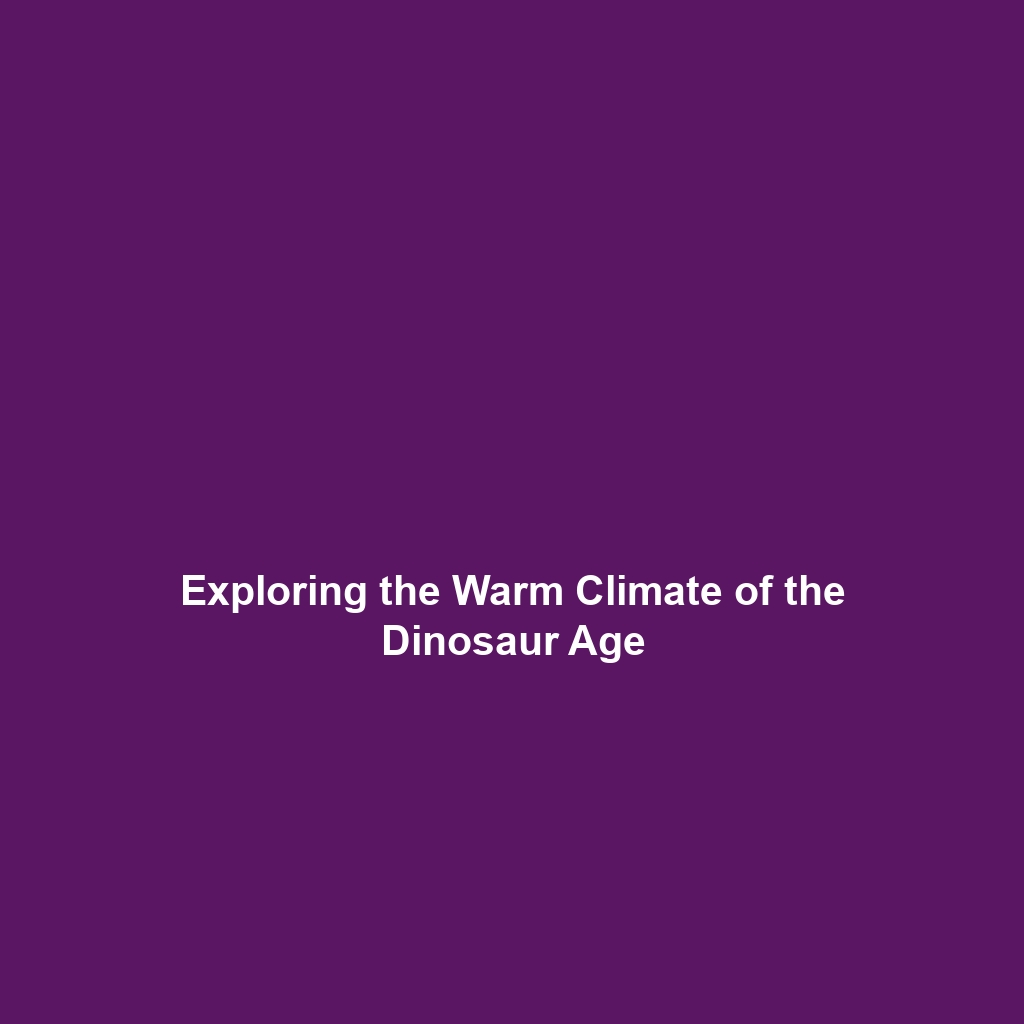The Age of Dinosaurs: A Warm Period in Climate History
Introduction
The “Age of Dinosaurs,” scientifically referred to as the Mesozoic Era, spans approximately 180 million years from the Triassic to the Cretaceous periods. This significant epoch was marked by a warm, greenhouse climate that fundamentally shaped the planet’s ecosystems. Understanding this period is crucial within the broader context of climate history, as it offers insights into ancient climate dynamics, biodiversity, and the long-term impacts of climate change on life on Earth.
Key Concepts
Warm Greenhouse Conditions
During the Age of Dinosaurs, Earth experienced predominantly warm greenhouse conditions, meaning the planet had significantly higher temperatures and elevated levels of CO2 compared to today. These conditions contributed to unprecedented biodiversity, particularly among reptiles and plants, as ecosystems adapted to warm environments.
Geological Time Scale
This era is divided into three main periods:
- Triassic (252 – 201 million years ago): Featured the emergence of the first dinosaurs and the recovery of ecosystems after the Permian-Triassic extinction.
- Jurassic (201 – 145 million years ago): Notable for the diversification of dinosaurs and the increase in lush vegetation.
- Cretaceous (145 – 66 million years ago): Characterized by the dominance of dinosaurs and the appearance of flowering plants.
Applications and Real-World Uses
Understanding the “Age of Dinosaurs” provides valuable applications in several fields:
- Paleoclimate Studies: Insights into past climates help scientists predict future climate scenarios.
- Conservation Biology: Analyzing biodiversity loss in the past informs current conservation efforts.
- Geosciences: Knowledge of ancient ecosystems aids in locating fossil fuels and mineral resources.
This historical perspective demonstrates how the study of the Age of Dinosaurs is crucial in various fields associated with Climate History.
Current Challenges
Studying the Age of Dinosaurs presents unique challenges:
- Incomplete Fossil Records: Gaps in fossil data can obscure our understanding of species interactions.
- Climate Complexity: The intricate relationship between climatic factors makes it hard to develop precise models.
- Technological Limitations: Current technology may not be sufficient to extract detailed climatic dat from ancient rock formations.
Future Research and Innovations
Exciting developments are on the horizon as researchers delve deeper into the Age of Dinosaurs:
- Advanced Imaging Techniques: Innovations in imaging technologies are enabling closer examinations of fossils and rock formations.
- Climate Models: New algorithms are being developed to better simulate ancient atmospheric conditions.
- Interdisciplinary Studies: Collaboration across disciplines, including geology, biology, and climate science, is paving the way for groundbreaking insights.
Conclusion
The Age of Dinosaurs represents a pivotal chapter in climate history, with warm greenhouse conditions shaping the Earth’s ecosystems throughout millions of years. By studying this period, we gain the ability to understand the long-term impacts of climate change and biodiversity. Enhancing our research in this area will prove crucial for future environmental policies and conservation efforts. For further insights, explore our articles on paleoclimate studies and conservation biology.
